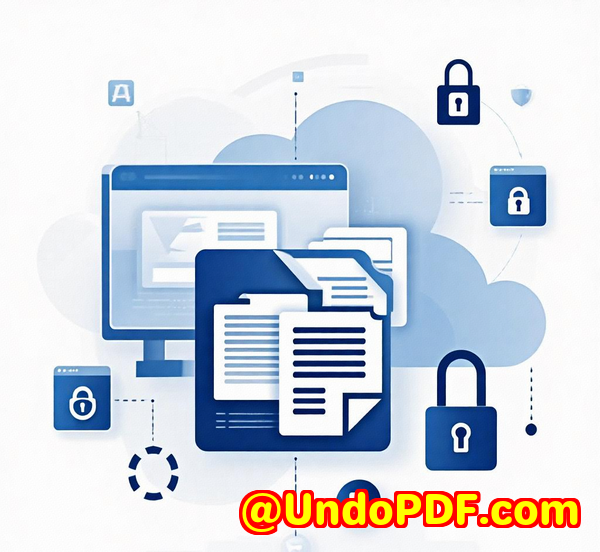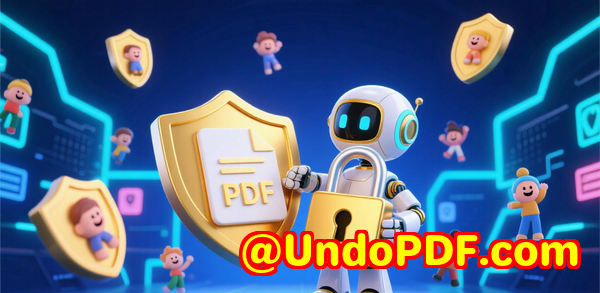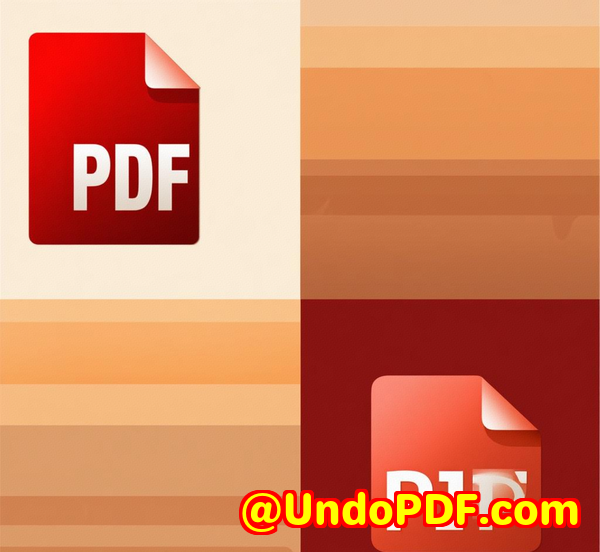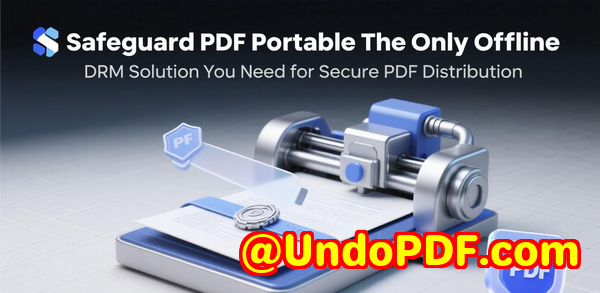VeryPDF DRM Protector Features That Make It Better Than Docparser for Secure PDFs
VeryPDF DRM Protector Features That Make It Better Than Docparser for Secure PDFs
Discover how VeryPDF DRM Protector locks PDFs to devices, prevents sharing, and ensures complete document security for publishers and businesses.

Every time I tried sharing an important PDF with a client or a student, I’d get that sinking feelingwhat if it gets forwarded to someone else?
I used to wrestle with Docparser and other PDF tools, thinking they’d safeguard my files.
But honestly? They fell short when it came to true device-level security and control over document usage.
That’s when I discovered VeryPDF DRM Protector, and it changed the way I think about PDF security.
Why VeryPDF DRM Protector Stands Out
When I first came across VeryPDF DRM Protector, I was drawn to its promise of locking PDFs to the first opened device.
For someone like me, managing proprietary eBooks, training manuals, and confidential reports, this was a game-changer.
Instead of worrying about files being copied, emailed, or uploaded to the cloud, I could finally take control.
The tool works on a simple principle: the first time a reader opens a protected PDF, the software records a unique hardware fingerprint of that device.
If I set it for one device, the PDF is permanently boundno sharing, no copying, no workarounds.
If I allow two or three devices, my readers can still use their personal laptop and tablet, but it’s strictly controlled.
I used this feature when distributing a set of premium eBooks to students.
Before VeryPDF DRM Protector, I’d constantly hear about PDFs being shared on forums or via email.
Now? I can ensure only paying readers get access.
And if I need to revoke a user’s access, it’s instantaneous.
Key Features That Blew Me Away
1. Device Binding Total Control Over Usage
This feature alone made me ditch Docparser.
With VeryPDF DRM Protector, I can:
-
Lock PDF files to individual devices.
-
Allow multiple licenses but restrict the number of devices per license.
-
Prevent access on non-Windows systems if needed.
I remember the first time I tried sending an internal training PDF to my team.
Even when one colleague tried opening it on a shared Mac, it simply wouldn’t load.
The software’s device-level encryption and keystore system make it impossible to bypass.
2. Restrict Document Access Stop Sharing in Its Tracks
VeryPDF DRM Protector doesn’t just lock devicesit controls how documents are used.
I can prevent:
-
Editing, copying, and screen grabbing.
-
Printing entirely or limit the number of prints.
-
Viewing based on user, domain, location, or device.
For one of my corporate clients, this meant we could distribute confidential proposals to multiple stakeholders without worrying about leaks.
Dynamic watermarks even let me track who opened or printed the file, including date, username, and company info.
3. Automatic Expiry & Revocation
This is perfect for subscription-based materials or temporary reports.
I can set PDFs to expire:
-
On a fixed date.
-
After a certain number of views or prints.
-
Automatically after a number of days in use.
It saved me from manually chasing down old files or worrying about outdated manuals circulating indefinitely.
4. Real-Time Usage Tracking
Knowing how documents are accessed is invaluable.
VeryPDF DRM Protector logs:
-
Views and prints.
-
Device types and operating systems.
-
Geographic access points.
I recall an instance where I noticed unusual activity from a device in another country.
I was able to revoke access immediately, preventing a potential leak.
5. Compliance and Security
For academic publishers, corporations, and authors alike, compliance matters.
VeryPDF DRM Protector helps enforce:
-
Document retention policies.
-
Legal compliance by restricting access.
-
IP protection and anti-piracy measures.
It’s not just about stopping leaksit’s about giving me confidence that my intellectual property is protected.
Real-Life Use Cases
I’ve applied VeryPDF DRM Protector in multiple scenarios:
-
Academic Publishing: Textbooks for students that cannot be shared beyond the original purchaser.
-
Authors & eBooks: Premium eBooks that ensure only paying customers gain access.
-
Corporate Training: Confidential training manuals distributed to employees worldwide.
-
Legal Documents: Contracts and sensitive client reports with restricted access.
In every case, the software provided peace of mind.
Even when I accidentally sent a file to the wrong email, the system prevented unauthorized access.
How It Compares to Docparser
I used to rely on Docparser for PDF handling.
It works fine for parsing tables or extracting data, but when it comes to security, it’s simply not in the same league.
Docparser cannot lock files to devices, cannot enforce real-time revocation, and doesn’t offer granular control over printing or editing.
VeryPDF DRM Protector isn’t just a PDF toolit’s a full-fledged document security solution.
I also appreciated the flexibility: I could customise licensing for multiple users, set different expiry dates, and track usage without extra plugins.
My Personal Take
Honestly, I didn’t realise how much time and stress I was losing before I switched to VeryPDF DRM Protector.
I no longer worry about students sharing PDFs, clients forwarding confidential documents, or old files lingering online.
The device binding feature alone pays for itself in saved headaches.
And the best part? It’s straightforward to use.
I protect a document once and customise it for multiple users without repeated steps.
If you handle sensitive PDFs, eBooks, training materials, or corporate documents, I can’t recommend this tool enough.
Click here to try it for yourself: https://drm.verypdf.com/
Start your free trial now and see how much control you gain.
Custom Development Services by VeryPDF
VeryPDF offers extensive custom development services to meet unique technical needs.
Whether you need specialised PDF processing on Windows, Linux, macOS, or server environments, their expertise covers it all.
Services include development using Python, PHP, C/C++, Windows API, Linux, Mac, iOS, Android, JavaScript, C#, .NET, and HTML5.
They also create Windows Virtual Printer Drivers for PDF, EMF, and image formats, as well as tools to capture and monitor print jobs.
Other offerings include:
-
System-wide and app-specific hook layers to monitor and intercept Windows APIs.
-
Document and image format analysis and processing for PDF, PCL, PRN, Postscript, EPS, and Office files.
-
Barcode recognition and generation, OCR, and OCR table recognition.
-
Report generators, graphical tools, and cloud-based solutions for conversion, viewing, and digital signatures.
-
Security solutions including DRM protection, PDF encryption, TrueType font technology, and printing controls.
For tailored solutions, contact VeryPDF at https://support.verypdf.com/ and discuss your requirements.
FAQ
Q1: Can VeryPDF DRM Protector lock PDFs to multiple devices?
Yes, you can set the number of allowed devices per license. By default, it can lock to a single device for maximum security.
Q2: Can I revoke access after a document has been distributed?
Absolutely. You can revoke access for all users, individual users, or based on specific documents.
Q3: Does it prevent printing and screen capturing?
Yes. You can restrict editing, copying, screen grabs, and printing, or control the number of allowed prints.
Q4: Is it suitable for academic or corporate use?
Definitely. It’s ideal for publishers, authors, training materials, legal documents, and corporate reports.
Q5: Can I track how my PDFs are being used?
Yes. You can see document views, prints, device types, and geographic locations.
Tags / Keywords
PDF security, DRM PDF protection, lock PDF to device, protect eBooks, VeryPDF DRM, prevent PDF sharing, document access control, secure PDF distribution, dynamic watermarking, digital rights management



